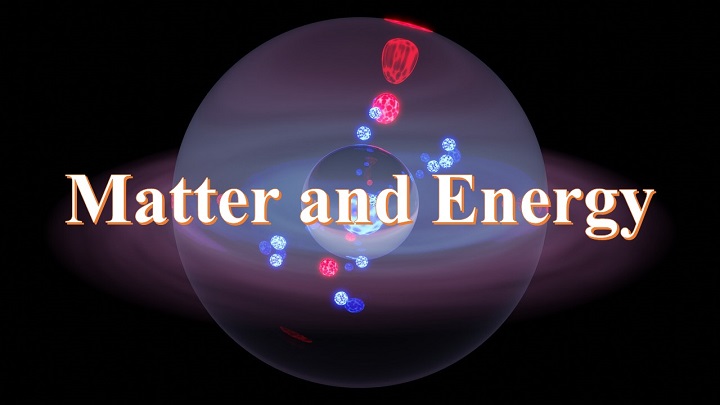Matter physics is a branch of physics that studies the properties of matter and energy at the atomic and subatomic levels. It is a complex and fascinating field that has led to many groundbreaking discoveries and technologies. In this article, we will take a closer look at matter physics, its key concepts, and how it has contributed to our understanding of the universe.
Matter is all around us – in the air we breathe, the food we eat, the clothes we wear. But what exactly is matter, and how does it interact with energy? These are questions that matter physics seeks to answer. Matter physics is a branch of physics that deals with the properties of matter and energy at the atomic and subatomic levels. It is a fundamental field of study that has led to many groundbreaking discoveries and technologies.
What is Matter?
Matter can be defined as anything that has mass and takes up space. It is composed of atoms, which are the basic building blocks of matter. Atoms are made up of a nucleus, which contains protons and neutrons, and electrons, which orbit around the nucleus. The properties of matter are determined by the behavior of these particles.
Properties of Matter
The properties of matter can be divided into several categories, including mass, volume, density, and states of matter.
1. Mass
Mass is the amount of matter in an object. It is measured in kilograms or grams. The mass of an object does not change, regardless of its location or the forces acting upon it.
2. Volume
Volume is the amount of space that an object occupies. It is measured in cubic meters or cubic centimeters. The volume of an object can change depending on its shape and the forces acting upon it.
3. Density
Density is a measure of how tightly packed the matter in an object is. It is defined as the mass of an object per unit of volume. Density is often used to identify different materials and substances.
4. States of Matter
Matter can exist in several states – solid, liquid, gas, and plasma. These states are determined by the arrangement and motion of the particles that make up the matter. In a solid, the particles are tightly packed and have a fixed shape. In a liquid, the particles are more spread out and can move around freely. In a gas, the particles are even more spread out and move around at high speeds. Plasma is a state of matter that occurs at extremely high temperatures and is made up of ionized particles.
Energy and Matter
Matter and energy are two sides of the same coin. Matter can be converted into energy, and energy can be converted into matter. The relationship between matter and energy is described by the famous equation E=mc², where E is energy, m is mass, and c is the speed of light.
1. Kinetic Energy
Kinetic energy is the energy of motion. It is a form of energy that is associated with the motion of particles, such as atoms and molecules. The faster the particles are moving, the more kinetic energy they have.
2. Potential Energy
Potential energy is energy that is stored in an object. It is a form of energy that is associated with the position or configuration of particles. For example, a ball held above the ground has potential energy because of its position relative to the ground.
3. Thermal Energy
Thermal energy is the energy that is associated with the temperature of an object. It is a form of kinetic energy that is associated with the motion of particles at the atomic and molecular levels.
4. Chemical Energy
Chemical energy is the energy that is stored in the bonds between atoms and molecules. It is a form of potential energy that is released when these bonds are broken.
5. Nuclear Energy
Nuclear energy is the energy that is released when the nucleus of an atom is split or when two nuclei are fused together. It is a form of energy that is associated with the strong nuclear force.
The Atom
1. Structure of the Atom
The nucleus of an atom is made up of protons, which have a positive charge, and neutrons, which have no charge. Electrons orbit around the nucleus in shells, or energy levels. The number of electrons in an atom is equal to the number of protons, giving the atom a neutral charge.
2. Atomic Models
Over the years, scientists have proposed several different models of the atom. The earliest model was the Dalton model, which viewed the atom as a solid, indivisible sphere. Later models, such as the Thomson model and the Rutherford model, refined our understanding of the structure of the atom.
3. Isotopes
Isotopes are atoms of the same element that have different numbers of neutrons. They have the same number of protons and electrons, but different atomic masses.
4. Radioactivity
Radioactivity is the spontaneous emission of radiation from the nucleus of an atom. It occurs when the nucleus is unstable and undergoes a decay process.
5. Subatomic Particles
Subatomic particles are particles that are smaller than an atom. The three main subatomic particles are electrons, protons, and neutrons.
6. Electrons
Electrons are negatively charged particles that orbit around the nucleus of an atom. They are involved in chemical reactions and the conduction of electricity.
7. Protons
Protons are positively charged particles that are found in the nucleus of an atom. They determine the atomic number of an element and play a key role in nuclear reactions.
8. Neutrons
Neutrons are particles that are found in the nucleus of an atom. They have no charge and play a key role in nuclear stability.
Quantum Mechanics
Quantum mechanics is the branch of physics that studies the behavior of matter and energy at the atomic and subatomic levels. It is a complex and fascinating field that has led to many groundbreaking discoveries and technologies.
1. Wave-Particle Duality
Wave-particle duality is the idea that particles, such as electrons, can exhibit both wave-like and particle-like behavior, depending on the circumstances. This concept is central to the field of quantum mechanics.
2. Uncertainty Principle
The uncertainty principle is a fundamental concept in quantum mechanics that states that certain pairs of physical properties, such as position and momentum, cannot both be known with absolute certainty at the same time.
3. Quantum States
Quantum states are the possible states of a particle or system of particles. They are described by wave functions, which are mathematical representations of the probabilities of finding a particle in a particular state.
4. Schrodinger Equation
The Schrodinger equation is a fundamental equation in quantum mechanics that describes the evolution of a system over time. It is a complex equation that involves wave functions and operators.
The Standard Model
The Standard Model is a theory that describes the fundamental particles and forces that make up the universe. It is a complex and fascinating model that has led to many groundbreaking discoveries.
1. Elementary Particles
Elementary particles are particles that are not composed of smaller particles. They include quarks, leptons, and gauge bosons.
2. Forces
Forces are the interactions between particles that govern the behavior of matter and energy. The four fundamental forces are the strong nuclear force, the weak nuclear force, the electromagnetic force, and the gravitational force.
3. Higgs Boson
The Higgs boson is a particle that was first proposed in the 1960s as a way to explain why particles have mass. It was finally discovered in 2012 by the Large Hadron Collider at CERN.
Applications of Matter Physics
Matter physics has many practical applications, ranging from nuclear power to medical imaging.
1. Nuclear Power
Nuclear power is a form of energy that is generated by splitting the nuclei of atoms. It is a clean and efficient source of energy, but it also poses risks due to the radioactive waste that is produced.
2. Medical Imaging
Medical imaging is a field that uses various forms of radiation to create images of the inside of the body. Techniques such as X-rays, CT scans, and MRI scans are all based on the principles of matter physics.
3. Semiconductor Technology
Semiconductor technology is a field that is based on the properties of materials that have a conductivity between that of a metal and an insulator. It is the foundation of modern electronics, including computers, smartphones, and other devices.
4. Quantum Computing
Quantum computing is a field that is based on the principles of quantum mechanics. It promises to revolutionize computing by allowing for much faster and more powerful calculations than traditional computers.
Conclusion
Matter physics is a complex and fascinating field that has led to many groundbreaking discoveries and technologies. From the structure of the atom to the principles of quantum mechanics, matter physics has helped us understand the fundamental properties of matter and energy. Its practical applications range from nuclear power to medical imaging and semiconductor technology. As our understanding of matter physics continues to grow, we can look forward to even more exciting discoveries in the future.
FAQs
1. What is matter physics?
Ans. Matter physics, also known as condensed matter physics, is a branch of physics that studies the behavior and properties of matter in its condensed form, such as solids, liquids, and complex materials. It deals with phenomena such as phase transitions, magnetism, superconductivity, and the behavior of materials under extreme conditions.
2. What are the properties of matter?
Ans. Matter has several properties, including mass, volume, density, and specific heat. It can exist in several phases or states, such as solid, liquid, and gas, which have distinct properties such as shape, volume, and compressibility. Matter can also exhibit other properties such as conductivity, magnetism, and chemical reactivity.
3. What is the relationship between matter and energy?
Ans. The relationship between matter and energy is described by Einstein’s famous equation, E=mc², which shows that mass (m) and energy (E) are interchangeable and are equivalent in certain circumstances. Matter can be converted into energy and vice versa, as demonstrated in nuclear reactions, where a small amount of matter is converted into a large amount of energy.
4. What is the structure of an atom?
Ans. An atom consists of a central nucleus, which contains positively charged protons and uncharged neutrons, surrounded by negatively charged electrons in orbits or shells. The number of protons in the nucleus determines the atom’s atomic number and therefore its chemical properties. The electrons occupy discrete energy levels or orbitals and can interact with each other through various physical and chemical processes.
5. What is the Standard Model?
Ans. The Standard Model is a theoretical framework in physics that describes the fundamental particles and their interactions through the strong, weak, and electromagnetic forces. It includes the quarks, which make up protons and neutrons, and the leptons, which include electrons and neutrinos, as well as the force-carrying particles known as bosons. The Higgs boson, discovered in 2012, is also an important part of the Standard Model, as it explains how particles acquire mass.

